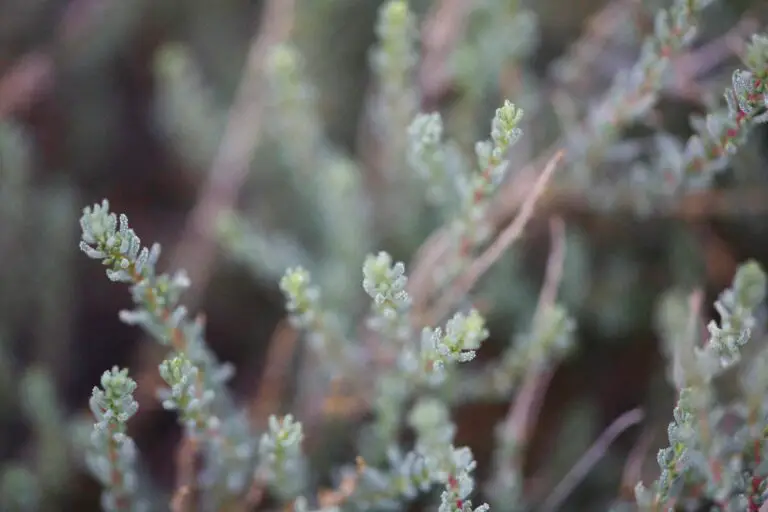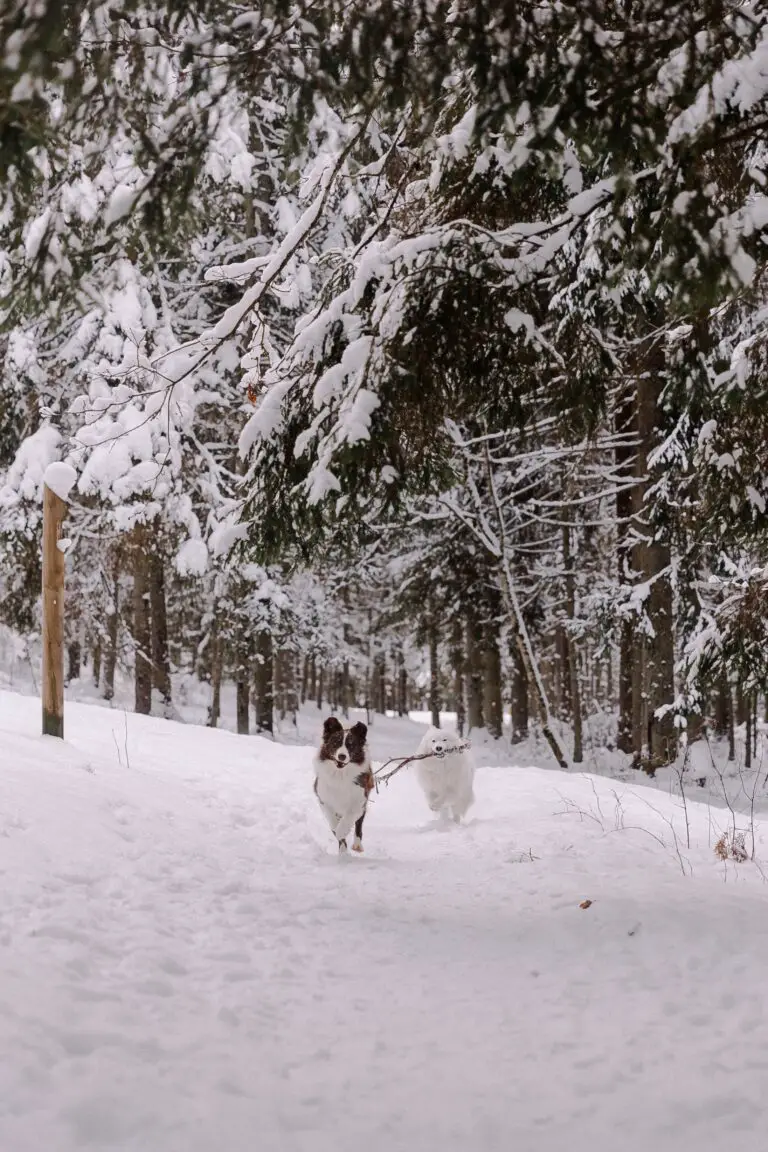Introduction to Sedum Plants and Pet Safety
Welcome to the colorful world of sedum plants, or as many garden enthusiasts affectionately call them, ‘stonecrop’. These hardy little beauties are the unsung heroes of drought-tolerant gardens, rockeries, and green roofs across the globe. With an impressive diversity of shapes, colors, and sizes, it’s no wonder sedum plants have charmed their way into our hearts and gardens. But, as pet owners, we must tread the garden path with caution and care, ever mindful of our furry friends who may not know a dangerous snack from a safe one.
Imagine this scenario: a sunny afternoon, you’re out in the garden admiring your handiwork while your canine companion frolics freely, nose to the ground, exploring every inch of greenery. As they stumble upon the attractive sedum patch, you can’t help but wonder, “Is this safe for my dog?” It’s a valid concern that many pet parents share. Understanding which plants are safe for pets is as crucial as knowing the best soil mix for your succulents.
Embedding a culture of pet safety within the gardening community is key. We’re not just plant parents; we’re pet parents too, and the well-being of our four-legged pals is a priority. With a sprawling variety of sedum species, ranging from the well-loved ‘Autumn Joy’ to the delightfully delicate ‘Blue Spruce’, it’s our duty to unveil the truth: are these beauties safe bedfellows for our dogs, or do they harbor a hidden danger? To ensure our gardens are a safe haven, we must equip ourselves with knowledge and share our green spaces wisely with our pets.
So, are you ready to dive into the verdant world of sedum plants with your tail-wagging sidekick by your side? Let’s embark on this journey to ensure our garden havens remain joyful spaces for both you and your cherished canine.
Understanding Sedum Varieties and Their Toxicity Levels
If you’re a pet owner with a green thumb, the allure of the robust and vibrant sedum plant has likely caught your eye. Renowned for their hardiness and low maintenance, these succulents can turn any garden into a picturesque scene, as whimsical as a child’s drawing of a green paradise. But the pressing question that tugs at every dog lover’s heartstrings is: “Are these stunning plants safe for my furry friend?“
Digging a little deeper, we discover the genus Sedum encompasses a bouquet of species – each with its own charm. Take a stroll through any garden center, and you’ll be greeted with sedums ranging from the ground-hugging ‘Dragon’s Blood’ to the upright and imposing ‘Autumn Joy’. Indeed, their diversity is as broad as a canine’s playful spirit.
However, the burning issue of toxicity can’t be swept under the proverbial rug. With pet safety paramount, here lies the crux of our investigation. While the  vast majority of sedum varieties breathe the air of innocence, being non-toxic to both dogs and humans, pet owners should remain vigilant. After all, when it comes to our beloved tail-waggers, it’s better to be safe than sorry. Just ask any vet, and they’ll regale you with tales of narrow escapes and cautionary anecdotes.
vast majority of sedum varieties breathe the air of innocence, being non-toxic to both dogs and humans, pet owners should remain vigilant. After all, when it comes to our beloved tail-waggers, it’s better to be safe than sorry. Just ask any vet, and they’ll regale you with tales of narrow escapes and cautionary anecdotes.
It pays to mention that while sedums are generally considered safe, sensitive pets might still experience mild gastrointestinal upset if they decide to snack on these succulents. Particularly, if Daisy decides to devour a whole bush in her afternoon escapades, a tummy ache might be on the horizon. For those curious about integrating sedums into their pet-friendly landscapes, perusing our informative guide on naturalizing your garden is a great way to start.
As caretakers of our four-legged companions, we must stay informed about the plants we introduce into their environment. While sedums are generally a safe bet for those looking to spruce up their gardens without compromising pet safety, a watchful eye and a dose of knowledge go a long way in keeping both your garden and your pup thriving.
What Science Says: Sedum Plants and Dogs
For dog owners with a green thumb, the garden is a shared space for both you and your furry friend. While some plants are perfectly safe for canines to sniff and explore, others might be a minefield of potential health risks. Sedum plants, beloved for their hardiness and diverse foliage, often come under scrutiny. The big question is: Are sedum plants safe for dogs, or should you be planning a garden makeover?
To discern the truth, let’s turn a page in the annals of scientific research. Studies delve into the varied effects of plant ingestion on canines, laying facts on the table. For example, excessive consumption of certain plants could potentially lead to gastrointestinal distress or, in more harrowing cases, to organ failure. But as far as sedum is concerned, there’s a trace of good news: they are generally considered low-toxicity plants for dogs.
Remember that memorable incident when Bella the Beagle had a sedum snack at a garden party? Bella’s mom had to learn first-hand—fortunately without any long-term consequences. But, not all dogs are as lucky as Bella when it comes to sampling garden plants. It’s crucial to ensure that non-toxic means completely safe for your own pooch’s health.
While we’re getting the lowdown on sedum plants from scientific studies, let’s not forget the practical steps to pet-proof our greenspaces. This informative guide on creating a safe garden environment for our four-legged companions can be really handy. After all, prevention is better than a trip to the vet!
Interested in seeing what a dog-friendly garden could look like? Take a peek at the array of succulents that won’t end up being a thorn in your (or your pup’s) side:
As we wrap up this segment on sedum plants and dogs, remember that the battle between curious canines and garden plants is age-old. Knowledge is power: understanding which plants are truly safe for dogs not only creates a serene sanctuary for your pet but also brings peace of mind.
Real-life Incidents: Case Studies and Reports of Sedum Ingestion
We share the soft, green space with our furry friends, but not all that’s green is good for them. Case studies and real-life incidents abound which show that sometimes, the plants dogs encounter can lead to unexpected vet trips. Let’s delve into some stories about dogs and their run-ins with sedum plants.
When Curiosity Doesn’t Pay: A Labrador’s Lesson
A Labrador’s innate curiosity once led it to sample the sedum in its owner’s rock garden. Hours later, the usually energetic pup was lethargic and vomiting. The owner rushed the four-legged friend to the vet, where they learned that sedum can cause gastrointestinal upset in dogs. With treatment, the dog recovered, reminding us that it’s crucial to guard our gardens.
The Garden Escape Artist: A Terrier’s Tummy Trouble
In another neighborhood, a terrier known for its escape acts ingested a considerable amount of sedum after wriggling out of the yard. The consequences were immediate: severe salivation, abdominal pain, and diarrhea. Luckily, the terrier was found in time and the local vet managed to provide lifesaving care. Anecdotes like these are valuable lessons in pet-proofing our gardens.
Mishap in the Meadow: A Spaniel’s Close Call
Open fields and meadows can hide sedum species that are less familiar to dog owners. One spring day, a spaniel that enjoyed bounding through wild flora chomped on some sedum by mistake. The dog’s owner recognized the signs of distress quickly, thanks to a blog on pet-safe horticulture, and sought vet assistance immediately, allowing for a swift recovery.
The stories above paint a vivid picture: sedum and dogs can be a risky combination. While these cases ended well, they highlight the importance of awareness and education on plant toxicity. Now, explore a visual journey into the world of houseplants and their impact on pets with this insightful video.
As we’ve seen, the ingestion of sedum can pose health risks to our canine companions. It cannot be stressed enough: dog owners should familiarize themselves with the plants in their environment to prevent these loveable creatures from harm’s way.
Recognizing the Symptoms of Poisoning in Dogs
If you’re a dog parent, the well-being of your furry friend is always a primary concern, especially when it comes to hazards lurking in your garden. Sedums, a popular succulent, may catch your dog’s attention due to their intriguing textures and colors. But the question nags at you: Are sedum poisonous to dogs? It’s crucial to be informed, because recognizing the symptoms of poisoning can be the difference between a close call and a visit to the vet.
Imagine you’re enjoying a sunny afternoon in your backyard; your loyal canine companion is trotting alongside, sniffing around curiously. Suddenly, you notice a telltale sign – your dog is drooling excessively, and there’s a piece of chewed-up plant nearby. Oh no, could it be sedum? The first step is to look for common symptoms: vomiting, diarrhea, excessive salivation, or lethargy. If your pup is displaying any of these signs, it’s time to take action.
We don’t always catch our naughty pups in the act – sometimes, symptoms emerge in phases. For instance, a normally energetic dog turning listlessly sprawled on the couch, his usual zeal all but gone, could be a red flag. Weakness or changes in urine color also signal it’s time to consult a professional. Knowledge is your ally; keeping an eye out for such abnormalities can save your doggy from a dire situation.
As you keep a watchful eye on your playful pooch, remember that not all signs are conspicuously dramatic. Subtle changes like a slight tremor or a faintly elevated heart rate may be easily overlooked but are equally telling. Any alteration in your dog’s standard behavior or routine warrants attention and, potentially, a vet’s expertise. 
Understanding what to look out for empowers you to react swiftly should your dog interact with something toxic, sedum included. Dogs, after all, can be indiscriminately curious with their mouths. Equipped with the knowledge of these symptoms, you and your four-legged friend can relish the great outdoors together, with peace of mind just a leash length away.
Immediate Actions: What to Do If Your Dog Eats Sedum
Imagine you’re enjoying a leisurely stroll in your garden, your faithful canine companion sniffing curiously at the plants and flowers. Suddenly, you see them take a bite out of the attractive sedum plant you recently planted. Your heart drops. You know sedum may not be the best salad choice for your pup, but how bad is it really? Take a breath; you’re about to get equipped with the know-how to handle this sticky situation.
First things first, stay calm. Dogs are inquisitive creatures, and sometimes their taste for exploration leads them to nibble on the flora in their environment. Some sedum species can cause mild to moderate digestive upset in dogs when ingested, so it’s critical to act swiftly but without panic. Here’s the rundown of the steps you’ll need to take:
Step 1: Remove Any Remaining Plant Matter
Gently open your dog’s mouth to see if there are any plant remnants you can safely remove. Be cautious—your dog might be distressed, and you want to avoid getting nipped.
Step 2: Identify the Plant
Not all sedum species have the same level of toxicity. If possible, quickly identify the specific type of sedum your dog has ingested. Snap a picture with your phone or take a sample of the plant—it can be incredibly useful when you’re talking to the vet.

Step 3: Monitor Your Dog’s Behavior
Keep a close eye on your four-legged friend for any signs of discomfort or unusual behavior. Symptoms like drooling, vomiting, or diarrhea can manifest fairly quickly and are a clear indication that your pooch isn’t feeling great.
Step 4: Call the Vet
Don’t hesitate to get professional advice. Ring up your veterinarian or the nearest animal hospital and describe the situation. They’ll likely ask you about the amount ingested, the type of sedum, and the symptoms your dog is exhibiting. Be ready to dash out the door if they recommend an in-person visit.
Each moment matters in these scenarios, so while we hope your furry pal never has such an encounter with sedum, being prepared can make all the difference. Remember, you’re not alone; your vet’s expertise is just a phone call away. With the right steps and a sprinkle of vigilance, you can ensure the safety and well-being of your beloved dog.
Prevention Tips: Keeping Your Garden Safe for Pets
Imagine a garden where the vibrant hues of sedum plants catch your eye, but the thought of your four-legged friend taking a curious nibble gives you pause. No need to sacrifice beauty for safety! Let’s dig into the art of creating a dog-friendly paradise that enchants without endangering.
First off, plant choice is paramount. While sedums might be a question mark, countless other species bring panache to your garden without posing a threat to your pup. Think ornamental grasses that sway to the rhythm of the breeze or robust snapdragons that add vertical drama. Safety, much like a well-balanced ecosystem, requires variety and careful selection.
But it’s not just what you plant, it’s where you plant it. Strategic garden layout can mean the difference between a dog-friendly oasis and a canine hazard zone. Consider raised beds or chic, decorative fences that set boundaries without looking like barricades. They hint to your furry friend: “This beauty is for your eyes only.”

Envision trails that guide your dog on a sensory journey through the garden, detouring them from the delicate or potentially risky spots. Think of it as creating a sniffer’s highway, weaving through the safe splashes of color and texture that invite exploration without worry.
Consider, too, the power of training. A dog that knows the boundaries of where they can dig, roll, and frolic is less likely to disturb your botanical artwork. Pair positive reinforcement with clear, consistent commands, and your dog won’t just be your best friend but your garden’s keeper as well.
Ultimately, the safe haven you create for your canine companion mirrors your care and thoughtfulness. It’s not just about what’s removed but what’s intentionally included—a selection of plants and designs that cater to both aesthetics and well-being, making every wagging tail a testament to a safe, shared haven. Your garden is not just a visual retreat but a living, breathing space where every member of the family, four-legged ones included, can thrive in harmony with nature.
Veterinarian Advice: Professional Opinions on Sedum and Dogs
When we consider the safety of our canine companions, the humble sedum plant doesn’t typically jump to the top of our worry list. After all, it’s just a plant, right? Well, hold your leash tight, because veterinarians are sounding the alarm on the potential risks these succulents may pose to our furry friends. Let’s dig up the facts and plant some knowledge in our pet-care garden.
Picture this: a sunny afternoon in the garden, your loyal pooch frolicking around, sniffing, and getting into every nook and cranny of your flower beds. Among your verdant display sits the sedum, a low-maintenance star of drought-tolerant landscapes. But what happens if your dog’s inquisitive taste buds lead them to take a nibble? That’s where expert advice comes in.

According to Dr. Furry Tail, DVM, while sedum plants are generally not listed as highly toxic, they can still cause gastrointestinal upset if ingested in significant amounts. Vomiting, diarrhea, and lethargy are the party crashers to watch out for. Dr. Furry Tail recounted a tail-wagging mishap where a curious Beagle, after chomping down on a chunk of sedum, ended up with a bellyache that led to an emergency vet visit.
Not just focusing on the negatives, it’s also important to highlight that many plants within the sedum genus—including the popular ‘Autumn Joy’—are typically safe. Nonetheless, Dr. Whisker Woof, another seasoned vet, emphasizes that “Safe” doesn’t mean “Snack on me.” He shared a waggish tale of a gardening guru whose Siberian Husky thought it wise to conduct a personal taste test with her sedum collection, only to spend the rest of the evening wistfully gazing at his upset stomach.
So, what’s the green-thumbed pet parent to do? The key advice from our veterinary virtuosos is supervision. Keep your dog’s curiosity in check while you’re gardening and consider fencing off areas where you have plants of questionable canine compatibility. Dr. Canine Green, an advocate for pet-safe gardening, recommends using a guiding paw rather than a scolding voice if your dog gets too close to the greenery, and maybe, just maybe, they’ll learn which plants to leave alone.
In the leafy labyrinth of plant safety, knowledge is your best friend. Always check the local guidelines for pet-friendly foliage before letting your pup roam the great outdoors. Remember, sedum may not be the Cruella de Vil of the plant world, but caution and care go a long way toward keeping your dog’s tail wagging happily in your garden sanctuary.
FAQs: Are Sedum Poisonous to Dogs?
Let’s dig into the root of the matter: can the picturesque sedum plant, often seen draping over rocks and gracing garden beds, pose a threat to our tail-wagging companions? It’s crucial for pet parents to know which plants are safe for their furry friends to frolic around. So, let us unpack the facts about sedum plants and your dog’s safety!
First off, you might wonder why sedum is such a common sight in backyards. These succulents are hardy, drought-resistant, and offer a variety of textures and colors, making them a favorite among green thumbs. But when Sparky gets a case of the ‘curious sniffer’, and decides to take a chomp out of your sedum display, should you be concerned?
The short and comforting answer for most sedum species is, generally, no. However (and this is a big ‘however’), there are a few species within the sedum family that can cause vomiting or diarrhea if ingested in large quantities. Fortunately for you and your four-legged explorer, serious cases are rare, and most dogs would have to eat a rather unappealing amount of the plant to experience any significant effects.
Imagine this scenario: You’ve stepped outside to enjoy a sunny day in the garden, coffee in one hand and a book in the other. Fido is bouncing around from one plant to another, and you watch with amusement as he takes a curious lick of a sedum leaf. No need for panic! Observe him for any unusual behavior, but chances are he’ll just trot along to his next adventure.

Interestingly enough, it’s not just the potential for digestive troubles that you should keep an eye on. Sedum plants are also known for their slightly irritating sap. If you’ve ever had to pull one apart, you may have noticed the sticky fluid. In some dogs with particularly sensitive skins, this sap can cause mild dermatitis. A tell-tale sign would be your pup scratching more than usual after an encounter with the plant.
So, if you catch your canine comrade nosing through your sedum display, it might be a good idea to redirect that energy with a game of fetch or a favorite chew toy. While sedum isn’t typically dangerous, it’s always better to be safe and keep their garden escapades as risk-free as possible, don’t you think?
To sum it up, while sedum plants are not considered highly toxic to dogs, it’s wise to practice caution. Keep a watchful eye on your pets around these attractive garden residents and always contact your veterinarian if you suspect your dog has eaten something they shouldn’t have. Here’s to happy, healthy pets and the peace of mind that comes with an informed and proactive approach to our gardens!



